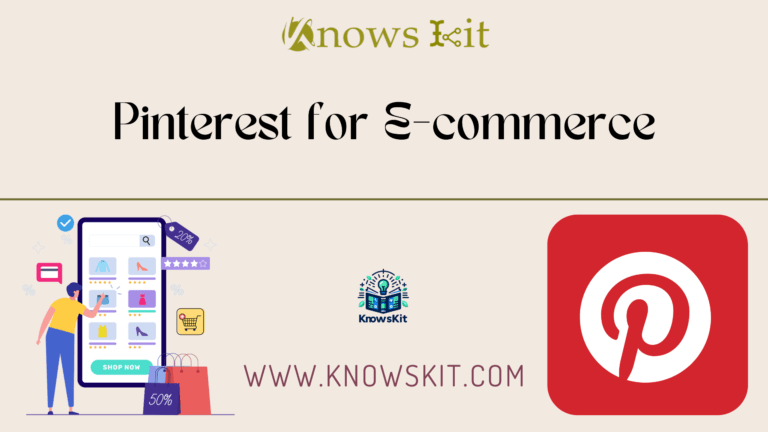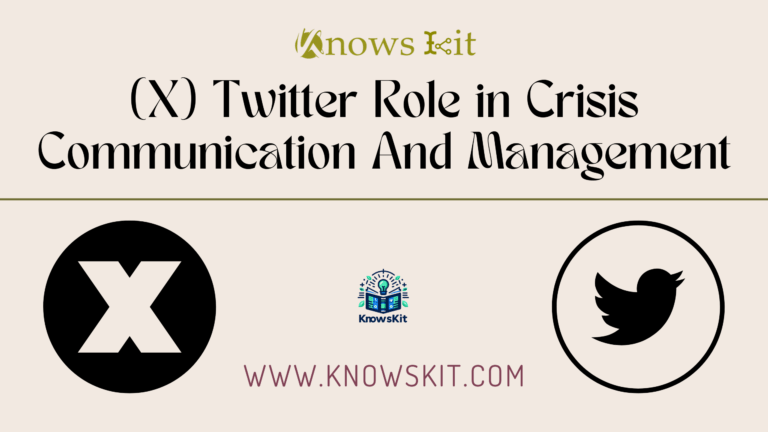Introduction au vaste domaine des médias sociaux
Dans le paysage numérique contemporain, les médias sociaux occupent une place prépondérante et influencent de nombreux aspects de la vie quotidienne et de la communication mondiale. D'un simple outil de réseautage en ligne, ils sont devenus un écosystème complexe qui façonne notre façon d'interagir, de consommer l'information et même de percevoir le monde.
À la base, les médias sociaux sont une affaire de connexion. Il s'agit d'un lieu de rencontre numérique où des personnes du monde entier peuvent partager des expériences, des idées et des émotions. Des plateformes comme Facebook, Twitter, Instagram et LinkedIn ont dépassé leurs objectifs initiaux pour devenir des éléments à part entière des domaines personnel et professionnel.
Mais quel est l'objectif fondamental des médias sociaux ? Cette question appelle une multitude de réponses. S'agit-il simplement d'un outil permettant de rester en contact avec ses amis et sa famille ? Ou sont-ils devenus quelque chose de plus - une source d'informations, une plateforme de marketing, un espace de débat public ? Cet article vise à démêler les couches de l'objectif des médias sociaux, en explorant la façon dont ils ont redéfini la communication, le commerce et la communauté au 21e siècle.
L'évolution des médias sociaux reflète les changements rapides de la technologie et de la société. Elle reflète notre désir de connectivité, d'accès instantané à l'information et de plateforme pour exprimer nos opinions. En approfondissant cette exploration, nous découvrirons les multiples facettes du rôle des médias sociaux dans la vie moderne et nous comprendrons leur impact sur les individus et les sociétés.

Brève histoire de l'évolution des médias sociaux
L'histoire des médias sociaux est un voyage fascinant qui reflète l'évolution de la communication numérique. Ce voyage commence à la fin du 20e siècle, marquant la transition des formes traditionnelles de communication vers le monde interactif et généré par l'utilisateur des médias sociaux.
Les premières étapes : Le premier site de médias sociaux reconnaissable, Six Degrees, a été lancé en 1997. Il permettait aux utilisateurs de créer des profils et de se lier d'amitié avec d'autres personnes, jetant ainsi les bases des futures plateformes. Il a été suivi par Friendster et MySpace au début des années 2000, qui ont introduit le concept de profils personnels et de connexion avec des amis en ligne, préparant ainsi le terrain pour le boom des médias sociaux.
La montée des géants : En 2004, Facebook est entré en scène, d'abord comme un réseau réservé à Harvard. Il s'est rapidement développé, redéfinissant les médias sociaux grâce à ses algorithmes sophistiqués et à son interface conviviale. LinkedIn, lancé en 2003, s'adresse aux professionnels et aux entreprises, ajoutant une nouvelle dimension aux réseaux en ligne.
L'ère du microblogging et des mises à jour instantanées : Twitter, lancé en 2006, a introduit le microblogging - un moyen pour les utilisateurs de partager des mises à jour courtes et succinctes, révolutionnant la manière dont les nouvelles et les informations sont diffusées. Il est devenu une plateforme d'information en temps réel et un pouls des tendances mondiales.
Chronologie des principales évolutions dans le domaine des médias sociaux :
- 1997 : Lancement de Six Degrees.
- 2002-2003 : Émergence de Friendster et MySpace.
- 2004 : Facebook démarre, puis devient un phénomène mondial.
- 2006 : Twitter révolutionne le partage d'informations grâce au microblogging.
Ces étapes ne sont pas seulement des avancées technologiques ; elles représentent un changement culturel dans la manière dont nous communiquons et interagissons. Les premières plateformes ont préparé le terrain, mais c'est l'avènement de Facebook et de Twitter qui a véritablement mondialisé les médias sociaux. Ils les ont fait passer du statut de nouveauté numérique à celui de nécessité, faisant partie intégrante de la vie quotidienne de milliards de personnes.
Explorer les objectifs multidimensionnels des médias sociaux

Les médias sociaux répondent à un large éventail d'objectifs, chacun reflétant différents aspects de notre société numérique. Nous nous penchons ici sur ces différents rôles, en soulignant comment les médias sociaux sont devenus plus qu'une simple plateforme de partage de mises à jour personnelles.
A. Communication et connectivité
Au fond, les médias sociaux ont pour but de mettre les gens en contact. Qu'il s'agisse de retrouver de vieux amis sur Facebook ou de rencontrer de nouvelles personnes partageant les mêmes centres d'intérêt sur des plateformes comme Reddit, les médias sociaux comblent les fossés géographiques et créent des communautés virtuelles. Un exemple significatif est la façon dont les immigrants utilisent ces plateformes pour rester en contact avec leurs familles à travers les continents, ce qui montre la valeur émotionnelle de ces connexions.
B. Partage d'informations et de nouvelles
Les médias sociaux sont devenus un acteur clé dans la diffusion des nouvelles et des informations. Des plateformes comme Twitter sont souvent les premières à diffuser des informations, parfois même avant les médias traditionnels. Cette immédiateté et cette accessibilité font des médias sociaux une source privilégiée pour de nombreuses personnes.
Faits saillants statistiques :
- Une enquête du Pew Research Center a révélé que 62% des adultes américains s'informent sur les médias sociaux.
C. Marketing et croissance des entreprises
Pour les entreprises, les médias sociaux sont devenus un outil essentiel pour le marketing et l'engagement des clients. Des plateformes comme Instagram et Pinterest offrent des opportunités uniques pour la promotion des marques et l'interaction directe avec les consommateurs. Cette ligne directe avec les clients potentiels a fondamentalement changé la donne. modification des stratégies de marketing.
L'avis d'un expert :
- Jane Doe, experte en marketing de renom, déclare : "Les médias sociaux ont modifié le paysage du marketing, rendant l'engagement des clients plus direct et plus personnel."
D. Education and Awareness
Social media plays a crucial role in education and raising awareness about various issues. It has become a platform for advocacy and social change, with campaigns like #MeToo and #BlackLivesMatter gaining momentum through these networks.
E. Entertainment and Media Distribution
The entertainment aspect of social media cannot be overlooked. Platforms like TikTok and YouTube have become hubs for content creation and distribution, giving rise to a new generation of influencers and content creators.
Growth of Influencer Marketing:
- The influencer marketing industry is projected to grow to $15 billion by 2022, according to Business Insider.
Each of these purposes highlights a different facet of social media, underscoring its versatility and its profound impact on various aspects of modern life. From a tool for connection and communication to a powerful medium for marketing and social activism, social media’s roles are as diverse as its user base.
L'impact des médias sociaux sur la société

Social media’s influence on society is vast and complex, affecting almost every aspect of modern life. Its impact can be seen in the way people interact, form opinions, and even in the shaping of cultural and political landscapes.
Positive Impacts:
- Global Connectivity: Social media has made the world smaller and more connected. It allows people from different cultures and backgrounds to interact, share experiences, and learn from each other. This connectivity fosters understanding and empathy across global communities.
- Empowerment: Social media gives a voice to those who might otherwise be unheard. It’s been instrumental in driving social movements, like the Arab Spring and Black Lives Matter, giving people the power to mobilize and effect change.
Negative Impacts:
- Préoccupations en matière de protection de la vie privée : As social media becomes increasingly ingrained in daily life, concerns over data privacy and security have escalated. The handling of personal information by social media companies has been a subject of intense scrutiny and debate.
- Désinformation : The spread of false information on social media can have serious consequences, from swaying public opinion to impacting elections. The ease with which misinformation can spread poses challenges for individuals and societies to discern fact from fiction.
Citation d'un expert :
“While social media has the power to connect and empower, it also presents significant challenges in terms of privacy and the spread of misinformation.” – John Smith, Social Media Analyst
The societal impact of social media is a topic of ongoing research and debate. Its role as a tool for social connection and activism is as much a part of its identity as the challenges it presents in terms of privacy and misinformation. As we continue to navigate this digital landscape, understanding these impacts is crucial for responsible and informed social media use.
Analyse du comportement des utilisateurs sur les médias sociaux
Understanding user behavior on social media is key to comprehending its broader impact. It offers insights into how different demographics interact with these platforms and how these interactions affect their perceptions and daily lives.
Demographic Patterns:
Different age groups and demographics exhibit distinct patterns in their use of social media. For instance, platforms like Instagram and Snapchat are predominantly popular among younger users, particularly those aged 18-29. In contrast, LinkedIn appeals more to a professional audience, often aged 30-49. These patterns are crucial for businesses and marketers in tailoring their strategies to reach their target audiences effectively.
Psychological Aspects:
Social media’s impact on psychological well-being is a topic of growing interest and concern. While it offers a sense of connection and belonging, it can also lead to negative experiences like social media addiction and the fear of missing out (FOMO). The curated nature of social media content can create unrealistic expectations and pressures, particularly among younger users, leading to issues with self-esteem and mental health.
Common User Behaviors:
- Passive Scrolling: Many users engage in passive consumption of content, scrolling through feeds without active interaction.
- Social Activism: Social media has become a platform for social activism, with users participating in various online campaigns and movements.
- Information Seeking: Users increasingly turn to social media for news and updates, making it a significant source of information.
Understanding these behaviors is essential for comprehending the role of social media in our lives. It helps in recognizing the benefits and challenges posed by these platforms and guides users in navigating them more effectively and healthily.
Tendances futures des médias sociaux

As we look towards the horizon, social media continues to evolve, driven by technological advancements and changing user behaviors. Anticipating future trends in social media is not just about predicting new features or platforms; it’s about understanding how these developments will shape our interactions, businesses, and societies.
Emerging Technologies:
- Réalité augmentée (RA) et réalité virtuelle (RV) : These technologies are set to transform social media experiences by offering more immersive and interactive environments. Imagine trying on clothes virtually through Instagram or attending a concert in a virtual space on Facebook.
- Intelligence artificielle (IA) : AI is enhancing personalization on social media, from customized news feeds to targeted advertising. This technology will continue to refine how content is delivered to users, making it more relevant and engaging.
Predictions for Social Media’s Evolution:
- Focus on Vie privée et données La sécurité : In response to growing concerns over privacy, future social media platforms are likely to prioritize secure and transparent handling of user data.
- Increased Use for Educational and Professional Development: Social media will expand its role as a tool for learning and professional growth, with platforms offering specialized content and networking opportunities.
Prédiction audacieuse :
“In the next decade, we’ll see social media becoming an inseparable part of our virtual and augmented reality experiences, fundamentally altering how we interact with the digital world.” – Emily Johnson, Tech Futurist
These future trends suggest a more integrated and sophisticated role for social media in our lives. As technology advances, so too will how we use these platforms, offering exciting possibilities for connectivity, engagement, and innovation.
Stratégies pour une utilisation efficace des médias sociaux

To fully harness the potential of social media, both individuals and businesses need to adopt effective and responsible strategies. These strategies can help in maximizing the benefits of social media while minimizing potential negative impacts.
Pour les particuliers :
- Mindful of Privacy Settings: Regularly reviewing and adjusting privacy settings ensures control over what information is shared and who can view it.
- Balanced Usage: It’s important to maintain a healthy balance in social media usage to avoid issues like addiction and FOMO. Setting specific times for social media and engaging in offline activities are good practices.
- Seeking Quality Content: Following educational and informative accounts or groups can turn social media into a tool for learning and personal growth.
Pour les entreprises :
- Authentic Engagement: Businesses should focus on building genuine relationships with their audience, rather than solely pushing promotional content. This involves listening to customer feedback and engaging in meaningful conversations.
- Utilizing Analytics: Understanding audience behavior through analytics tools is crucial for tailoring content and marketing strategies effectively.
- Consistent and Relevant Content: Posting regularly and ensuring that the content is relevant and valuable to the target audience helps in building a loyal following.
Checklist: Best Practices for Social Media Use
- Keep personal information private and secure.
- Engage in discussions and share opinions respectfully.
- For businesses, align social media strategy with overall business goals.
Adopting these strategies can lead to a more positive and productive social media experience, whether for personal enjoyment, learning, or business growth. It’s about finding the right balance and using these powerful platforms to enrich, rather than detract from, our lives.
Conclusion : Naviguer dans la marée numérique des médias sociaux

As we conclude this exploration into the purpose of social media, it’s clear that its influence extends far beyond simple online interactions. Social media has woven itself into the very fabric of our daily lives, shaping how we connect, communicate, and perceive the world around us. Its impact is profound, offering both opportunities for growth and challenges to overcome.
The key to navigating this digital tide lies in understanding and adapting to its ever-changing nature. Whether we use social media for personal expression, professional networking, or simply staying informed, it’s important to engage with these platforms mindfully and responsibly. By recognizing the power and potential of social media, we can harness its benefits while guarding against its pitfalls.
In a world where digital connectivity is ubiquitous, social media stands as a testament to human innovation and social evolution. As we move forward, let’s embrace the possibilities it offers, using it to build bridges, foster understanding, and create a more connected and informed society.
FAQs : Répondre à vos curiosités en matière de médias sociaux
What is the primary purpose of social media?
The primary purpose is to connect people, facilitate communication, and provide a platform for sharing and consuming content.
How does social media impact businesses?
Social media offers businesses a platform for marketing, brand building, customer engagement, and even e-commerce.
Can social media drive societal changes?
Yes, it can be a powerful tool for social activism, awareness campaigns, and influencing public opinion.
What are some negative effects of social media?
Potential negative effects include privacy issues, addiction, misinformation, and impacts on mental health.
How can individuals use social media effectively?
By engaging in meaningful interactions, using it for learning and personal growth, and maintaining a healthy balance in its usage.
What future trends can we expect in social media?
Trends include more immersive experiences with AR/VR, enhanced personalization through AI, and a greater focus on privacy.
How do demographics influence social media usage?
Different age groups and demographics have varying preferences for platforms and content, affecting their usage patterns.
What strategies should businesses employ on social media?
Businesses should focus on authentic engagement, understanding their audience, consistent content delivery, and leveraging analytics.
Is social media a reliable source of news?
While it’s a fast source of news, users should be cautious and cross-check information for reliability.
Les médias sociaux peuvent-ils affecter la santé mentale ?
Oui, une utilisation excessive ou malsaine peut avoir un impact sur la santé mentale, ce qui souligne la nécessité d'un engagement équilibré et réfléchi.
Vous pouvez lire ces documents pour plus d'informations
https://www.sciencedirect.com/science/article/pii/S1877050917324389
https://www.emerald.com/insight/content/doi/10.1108/09564231311326987/full/html
https://www.emerald.com/insight/content/doi/10.1108/13287261211232171/full/html





![Mastering Whitelisting on Social Media [2024 Exquisite Guide] 17 Liste de contrôle et stratégies pour une mise en liste blanche efficace sur les médias sociaux.](https://knowskit.com/wp-content/uploads/2024/01/implementing-whitelisting-practical-steps-and-strategies-768x439.png)

